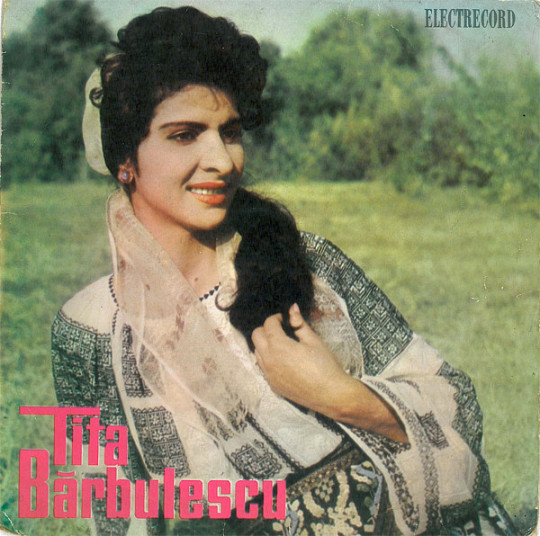Celebrating the beauty of the cultures, arts, histories, and people of the former socialist republics of Eastern Europe and the Soviet Union
Don't wanna be here? Send us removal request.
Text

Komi Girl from Pechora, Russia
71 notes
·
View notes
Text







Aprili, Otar Iosseliani, 1961
53 notes
·
View notes
Text

Pavel a Khudi Nenet from Yamalo-Nenets Autonomous District, Siberia, Russia. 2018
"The life of Nenets people in this area is based on following the reindeer as they move along ancient routes around the tundra. To survive the winter the reindeer eat a type of lichen known as reindeer moss, which may be covered in metres of snow. The Khudi Nenets brigade we visited have a herd of some 4,000 reindeer, with roughly 1,500 of them belonging to the Khudi Nenets themselves. The remaining 2,500 are owned by the ‘state farms’. If Khudi Nenets people slaughter a state-farm animal, its value is docked from their salary, but they are allowed to slaughter their own reindeer."
- Jimmy Nelson
147 notes
·
View notes
Text


Kyrgyz Girls from Sary-Mogol, Alay Valley, Kyrgyzstan - Jimmy Nelson
#central asia#kyrgyzstan#culture#nomadic#asia#eurasian steppes#eurasian#steppes#krygyz#jimmy nelson#eurasia#kirghiz
243 notes
·
View notes
Text

Latvian Folk Costumes
77 notes
·
View notes
Text






Vinyl's of Romanian folk singer Tita Bărbulescu
57 notes
·
View notes
Text

Costume sketches for the opera by E. Brusilovsky “Er-Targyn" - Gulfairus Ismailova
62 notes
·
View notes
Text












Gagauz: The Descendants of the Wolves
"In the south of the Republic of Moldova lies the small autonomous region of Gagauzia. Here lives a largely unknown people with old traditions and customs: the Gagauz, a minority of ethnic Turks with Christian Orthodox faith, the descendants of the Wolves.
According to legend, after an enemy raid, a she-wolf discovered a little boy who had miraculously survived in the forest and took care of him. This boy became the ancestor of the Gagauz people.
But very few young people decide to stay in the land of their ancestors. Older people proudly try to preserve their identity, their traditions and, above all, their language in order to continue on the path to the independence they long for."
152 notes
·
View notes
Text

Albanian folk musician and artist Kristian Zefi
32 notes
·
View notes
Text

Tajik Suzani
"Suzani is a type of embroidered and decorative tribal textile made in Tajikistan, Uzbekistan, Afghanistan and other Central Asian countries. Suzanis are rather delicate and extremely few examples survive from before the late 18th and early 19th centuries. They belong, however, to a very ancient tradition. Suzanis were traditionally made by Central Asian brides as part of their dowry, and were presented to the groom on the wedding day."
88 notes
·
View notes
Text





A reconstruction of a wooden 17th century synagogue once located in Gwozdziec, a formerly Polish town in Ukraine, at the POLIN Museum of the History of Polish Jews.
2K notes
·
View notes
Text

Girl dressed as a Motanka - Oksana Onysko
The Motanka is a traditional doll used as an amulet in Ukrainian culture, dating back thousands of years possibly to the Cucuteni–Trypillia culture. It represents the unity between ones family and ancestors - once also believed to be a vessel of the ancestors of the person who possessed it. It was also viewed as a tool that helped protect a person from the evil eye and curses, and that the person creating it could project powers into it based on what they were thinking at the time. The Motanka is created faceless with a cross covering its head, as Ukrainian folk belief claimed that etching a face onto it could drain a living spirit into it.
1K notes
·
View notes
Text


Russian folk group «Комонь»
138 notes
·
View notes
Photo









Malá morská víla (The Little Mermaid | Karel Kachyna | 1976)
#karel kachyna#mala morska vila#malá morská víla#czechoslovak#czechoslovakia#czechoslovak cinema#czechoslovak film#czechoslovak movie
327 notes
·
View notes
Photo

Women at Dračevo Slava celebration, ca. June 1954
86 notes
·
View notes
Photo

Woman’s costume of the first half of the 19th century. Mishar Tatars.
87 notes
·
View notes
Text


Historical Armenian clothing
[Top: Cilician Bride; Bottom: Woman from the Bagratid Dynasty between the 9th and 13th century]
245 notes
·
View notes